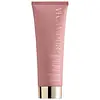What's inside
What's inside
 Key Ingredients
Key Ingredients

No key ingredients
 Benefits
Benefits

 Concerns
Concerns

 Ingredients Side-by-side
Ingredients Side-by-side

Aloe Barbadensis Leaf
MaskingWater
Skin ConditioningBehentrimonium Chloride
PreservativeCetearyl Alcohol
EmollientGlycerin
HumectantCetyl Alcohol
EmollientAlcohol
AntimicrobialCocos Nucifera Water
MaskingButyrospermum Parkii Butter
Skin ConditioningCocos Nucifera Oil
MaskingMacadamia Ternifolia Seed Oil
EmollientPanthenol
Skin ConditioningPolyquaternium-10
Polyquaternium-37
Diheptyl Succinate
EmollientCapryloyl Glycerin/Sebacic Acid Copolymer
Skin ConditioningGlyceryl Stearate
EmollientPropylene Glycol Dicaprylate/Dicaprate
EmollientPPG-1 Trideceth-6
Skin ConditioningTapioca Starch
Propylene Glycol
HumectantDMDM Hydantoin
PreservativeDiazolidinyl Urea
PreservativeIodopropynyl Butylcarbamate
PreservativeParfum
MaskingAloe Barbadensis Leaf, Water, Behentrimonium Chloride, Cetearyl Alcohol, Glycerin, Cetyl Alcohol, Alcohol, Cocos Nucifera Water, Butyrospermum Parkii Butter, Cocos Nucifera Oil, Macadamia Ternifolia Seed Oil, Panthenol, Polyquaternium-10, Polyquaternium-37, Diheptyl Succinate, Capryloyl Glycerin/Sebacic Acid Copolymer, Glyceryl Stearate, Propylene Glycol Dicaprylate/Dicaprate, PPG-1 Trideceth-6, Tapioca Starch, Propylene Glycol, DMDM Hydantoin, Diazolidinyl Urea, Iodopropynyl Butylcarbamate, Parfum
Water
Skin ConditioningCetearyl Alcohol
EmollientMacadamia Integrifolia Seed Oil
Skin ConditioningSodium C14-16 Olefin Sulfonate
CleansingLauramidopropyl Betaine
CleansingCocamidopropyl Hydroxysultaine
CleansingHeptyl Glucoside
Parfum
MaskingSr-(Wasp Spider Polypeptide-1 Oligopeptide-178)
Skin ConditioningPolyacrylate Crosspolymer-6
Emulsion StabilisingPentylene Glycol
Skin ConditioningGlyceryl Caprylate
EmollientHydroxyethylcellulose
Emulsion StabilisingGlycerin
HumectantMagnolia Officinalis Bark Extract
AntimicrobialAloe Barbadensis Leaf Extract
EmollientSodium PCA
HumectantPhytic Acid
Mannitol
HumectantPhosphatidylcholine
EmulsifyingSodium Hydroxide
BufferingCeramide NP
Skin ConditioningCitric Acid
BufferingCetrimonium Chloride
AntimicrobialBiotin
AntiseborrhoeicJasminum Grandiflorum Flower Extract
MaskingCananga Odorata Flower Oil
MaskingGardenia Jasminoides Fruit Extract
Cosmetic ColorantCitrus Junos Peel Oil
AstringentCetyl Alcohol
EmollientPotassium Sorbate
PreservativeSodium Benzoate
MaskingSodium Chloride
MaskingLimonene
PerfumingGeraniol
PerfumingCitral
PerfumingBenzyl Alcohol
PerfumingCitronellol
PerfumingAmyl Cinnamal
PerfumingFarnesol
PerfumingLinalool
PerfumingWater, Cetearyl Alcohol, Macadamia Integrifolia Seed Oil, Sodium C14-16 Olefin Sulfonate, Lauramidopropyl Betaine, Cocamidopropyl Hydroxysultaine, Heptyl Glucoside, Parfum, Sr-(Wasp Spider Polypeptide-1 Oligopeptide-178), Polyacrylate Crosspolymer-6, Pentylene Glycol, Glyceryl Caprylate, Hydroxyethylcellulose, Glycerin, Magnolia Officinalis Bark Extract, Aloe Barbadensis Leaf Extract, Sodium PCA, Phytic Acid, Mannitol, Phosphatidylcholine, Sodium Hydroxide, Ceramide NP, Citric Acid, Cetrimonium Chloride, Biotin, Jasminum Grandiflorum Flower Extract, Cananga Odorata Flower Oil, Gardenia Jasminoides Fruit Extract, Citrus Junos Peel Oil, Cetyl Alcohol, Potassium Sorbate, Sodium Benzoate, Sodium Chloride, Limonene, Geraniol, Citral, Benzyl Alcohol, Citronellol, Amyl Cinnamal, Farnesol, Linalool
 Reviews
Reviews

Ingredients Explained
These ingredients are found in both products.
Ingredients higher up in an ingredient list are typically present in a larger amount.
Cetearyl alcohol is a mixture of two fatty alcohols: cetyl alcohol and stearyl alcohol. It is mainly used as an emulsifier. Emulsifiers help prevent the separation of oils and products. Due to its composition, it can also be used to thicken a product or help create foam.
Cetearyl alcohol is an emollient. Emollients help soothe and hydrate the skin by trapping moisture.
Studies show Cetearyl alcohol is non-toxic and non-irritating. The FDA allows products labeled "alcohol-free" to have fatty alcohols.
This ingredient is usually derived from plant oils such as palm, vegetable, or coconut oils. There is debate on whether this ingredient will cause acne.
Due to the fatty acid base, this ingredient may not be Malassezia folliculitis safe.
Learn more about Cetearyl AlcoholCetyl Alcohol is a fatty alcohol. Fatty Alcohols are most often used as an emollient or to thicken a product.
Its main roles are:
Though it has "alcohol" in the name, it is not related to denatured alcohol or ethyl alcohol.
The FDA allows products labeled "alcohol-free" to have fatty alcohols.
Learn more about Cetyl AlcoholGlycerin is already naturally found in your skin. It helps moisturize and protect your skin.
A study from 2016 found glycerin to be more effective as a humectant than AHAs and hyaluronic acid.
As a humectant, it helps the skin stay hydrated by pulling moisture to your skin. The low molecular weight of glycerin allows it to pull moisture into the deeper layers of your skin.
Hydrated skin improves your skin barrier; Your skin barrier helps protect against irritants and bacteria.
Glycerin has also been found to have antimicrobial and antiviral properties. Due to these properties, glycerin is often used in wound and burn treatments.
In cosmetics, glycerin is usually derived from plants such as soybean or palm. However, it can also be sourced from animals, such as tallow or animal fat.
This ingredient is organic, colorless, odorless, and non-toxic.
Glycerin is the name for this ingredient in American English. British English uses Glycerol/Glycerine.
Learn more about GlycerinParfum is a catch-all term for an ingredient or more that is used to give a scent to products.
Also called "fragrance", this ingredient can be a blend of hundreds of chemicals or plant oils. This means every product with "fragrance" or "parfum" in the ingredients list is a different mixture.
For instance, Habanolide is a proprietary trade name for a specific aroma chemical. When used as a fragrance ingredient in cosmetics, most aroma chemicals fall under the broad labeling category of “FRAGRANCE” or “PARFUM” according to EU and US regulations.
The term 'parfum' or 'fragrance' is not regulated in many countries. In many cases, it is up to the brand to define this term.
For instance, many brands choose to label themselves as "fragrance-free" because they are not using synthetic fragrances. However, their products may still contain ingredients such as essential oils that are considered a fragrance by INCI standards.
One example is Calendula flower extract. Calendula is an essential oil that still imparts a scent or 'fragrance'.
Depending on the blend, the ingredients in the mixture can cause allergies and sensitivities on the skin. Some ingredients that are known EU allergens include linalool and citronellol.
Parfum can also be used to mask or cover an unpleasant scent.
The bottom line is: not all fragrances/parfum/ingredients are created equally. If you are worried about fragrances, we recommend taking a closer look at an ingredient. And of course, we always recommend speaking with a professional.
Learn more about ParfumWater. It's the most common cosmetic ingredient of all. You'll usually see it at the top of ingredient lists, meaning that it makes up the largest part of the product.
So why is it so popular? Water most often acts as a solvent - this means that it helps dissolve other ingredients into the formulation.
You'll also recognize water as that liquid we all need to stay alive. If you see this, drink a glass of water. Stay hydrated!
Learn more about Water